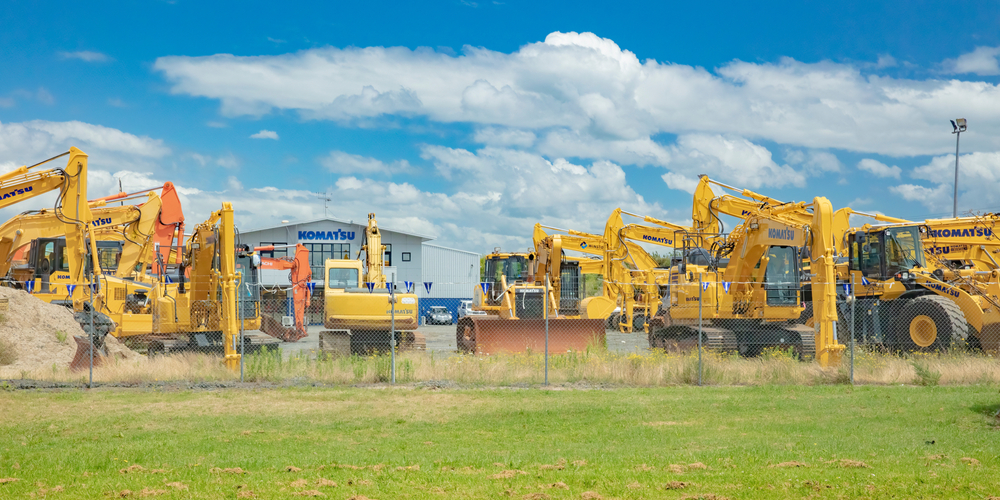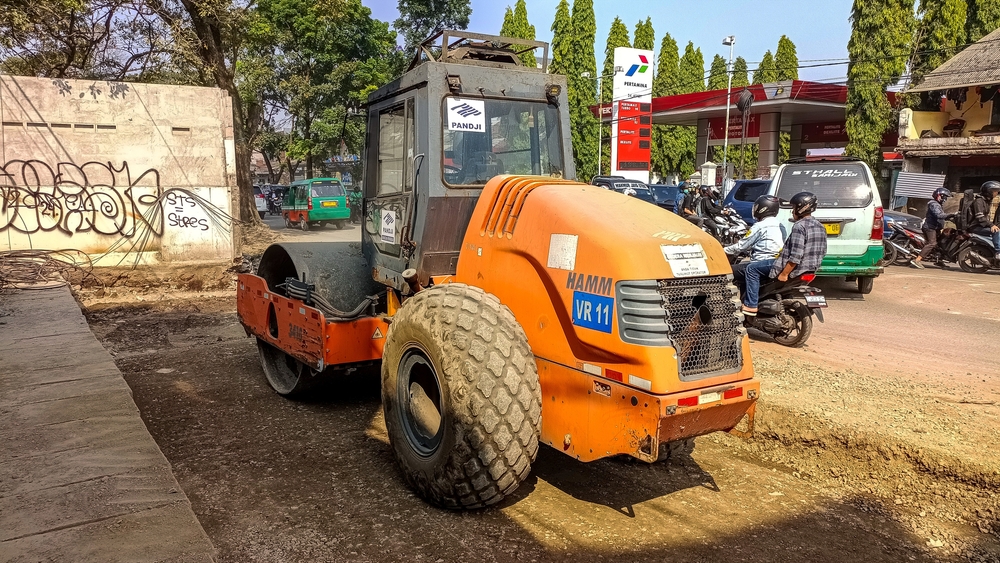Excavator undercarriages are crucial components of construction machinery, directly influencing performance and efficiency on-site.
Undercarriage issues can lead to significant downtime and costly repairs, affecting overall project productivity.
Addressing these issues promptly and implementing effective maintenance strategies are essential for ensuring the longevity and reliability of your equipment.
Key Components of Excavator Undercarriages
Excavator undercarriages comprise several key components, each playing a vital role in the machine’s movement and stability. These components include:
Tracks
Tracks provide the foundation and grip for the excavator’s movement. They distribute the machine’s weight evenly across the ground, allowing it to traverse various terrains with stability and control. Tracks are typically made of heavy-duty steel or rubber, depending on the application and ground conditions.
Rollers
Rollers support the weight of the excavator and facilitate smooth track motion. They are positioned along the undercarriage frame and help maintain track alignment. There are two types of rollers: bottom rollers (which support the track from below) and top rollers (also known as carrier rollers, which support the track from above).
Idlers
Idlers maintain track tension and guide the track’s movement. They are located at the front and sometimes the rear of the undercarriage, keeping the tracks properly aligned and tensioned. Properly functioning idlers are essential for preventing track derailment and excessive wear.
Sprockets
Sprockets drive the track system, converting engine power into track motion. They are toothed wheels that engage with the track links, propelling the excavator forward or backward. Sprockets must be correctly aligned and in good condition to ensure efficient power transfer and smooth operation.
Track Chains
Track chains connect track shoes, enabling the continuous loop of the track system. The links of the track chain must be well-lubricated and free from damage to prevent breakage and ensure smooth movement. Track chains bear the brunt of the excavator’s weight and forces, making their maintenance crucial.
Each component must function correctly to ensure the excavator’s stability and efficient operation. Neglecting any part of the undercarriage can lead to performance issues and costly repairs.
Common Undercarriage Issues
Several common issues can affect excavator undercarriages, including:
1. Track Wear
Caused by friction and abrasion, track wear leads to reduced track life. This wear is often visible as thinning or deformation of the track pads and links. Regular inspection and timely replacement of worn tracks can prevent further damage to the undercarriage.
2. Track Tension
Incorrect tension can cause track slippage or excessive wear. Tracks that are too loose may derail or slip, while overly tight tracks can accelerate wear on the rollers and idlers. Maintaining the correct track tension as specified by the manufacturer is vital for optimal performance.
3. Misalignment
Misaligned tracks can result in uneven wear and reduced efficiency. Misalignment may be caused by worn components, improper tension, or debris lodged in the undercarriage. Regular checks and adjustments can prevent severe wear patterns and prolong track life.
4. Track Slippage
Often due to inadequate tension or worn-out components, track slippage can hinder the excavator’s performance. Slippage occurs when the tracks lose grip and fail to move synchronously with the drive sprockets. Ensuring proper tension and replacing worn parts can mitigate this issue.
5. Track Shoe Damage
Broken or damaged track shoes can compromise undercarriage performance. Track shoes provide the necessary traction and support; damaged shoes can lead to reduced stability and increased wear on other components. Prompt replacement of damaged shoes is essential for maintaining balance and traction.
Recognizing the symptoms of these issues early can prevent more severe problems and costly repairs. Regular inspections and maintenance routines are critical to identifying and addressing these common undercarriage issues promptly.
Troubleshooting Tips
Addressing common undercarriage issues involves several troubleshooting techniques:
1. Inspecting Components
Regularly check tracks, rollers, idlers, sprockets, and track chains for signs of wear or damage. Look for signs of thinning, cracking, or deformation and ensure all parts are in good working condition.
2. Adjusting Track Tension
Use the manufacturer’s guidelines to ensure proper track tension, preventing slippage and wear. Incorrect tension can lead to track derailment or excessive wear on the undercarriage components.
3. Realigning Tracks
Correct misalignment by adjusting track tension and checking for obstructions. Misaligned tracks can cause uneven wear and reduce the machine’s efficiency.
4. Replacing Damaged Parts
Replace worn-out or damaged components promptly to maintain undercarriage integrity. Regularly scheduled maintenance and part replacement can prevent more severe damage and costly repairs.
Following these steps can help identify and resolve issues before they escalate. Keeping a maintenance log and performing routine checks can ensure that potential problems are addressed proactively.
Preventive Maintenance
Implementing preventive maintenance practices is essential for prolonging the life of excavator undercarriages. Key practices include:
Maintenance Schedules
Adhere to regular maintenance schedules to inspect and service undercarriage components. Scheduled maintenance helps detect wear and tear early, allowing for timely intervention.
Lubrication Guidelines
Ensure all moving parts are adequately lubricated to reduce friction and wear. Proper lubrication prevents metal-on-metal contact, which can cause significant damage over time.
Cleaning Techniques
Keep the undercarriage clean to prevent dirt and debris buildup, which can cause wear and damage. Regular cleaning removes abrasive materials that can accelerate component wear.
Consistent preventive maintenance can significantly reduce the risk of undercarriage issues. Developing a maintenance routine tailored to the specific needs of your excavator can enhance its performance and lifespan.
Solutions and Repairs
For more severe undercarriage issues, consider the following solutions and repairs:
Track Replacements
Replace tracks that are excessively worn or damaged. New tracks ensure better traction and stability, reducing the strain on other undercarriage components.
Roller Repairs
Repair or replace rollers showing signs of wear or damage. Functional rollers are crucial for smooth track movement and load distribution.
Sprocket Adjustments
Adjust or replace sprockets that are not functioning correctly. Properly functioning sprockets ensure efficient power transfer from the engine to the tracks.
Conclusion
Maintaining excavator undercarriages is crucial for ensuring optimal performance and minimizing downtime.
Proper upkeep of these components directly impacts the efficiency and longevity of the machinery, reducing the likelihood of costly repairs and project delays.
Following the troubleshooting tips, preventive maintenance practices, and solutions outlined in this guide enables effective management and resolution of common undercarriage issues.
Prioritizing regular maintenance routines and seeking expert assistance when needed will not only extend the life of excavator undercarriages but also enhance overall project efficiency.
This proactive approach ensures that excavators remain reliable, safe, and productive assets on any construction site.









